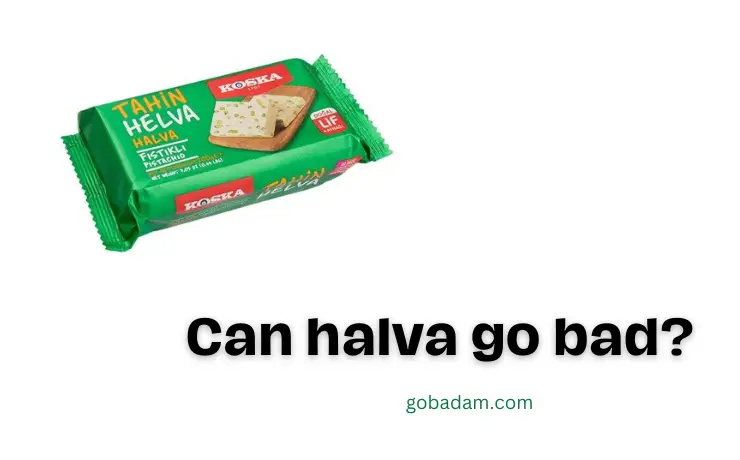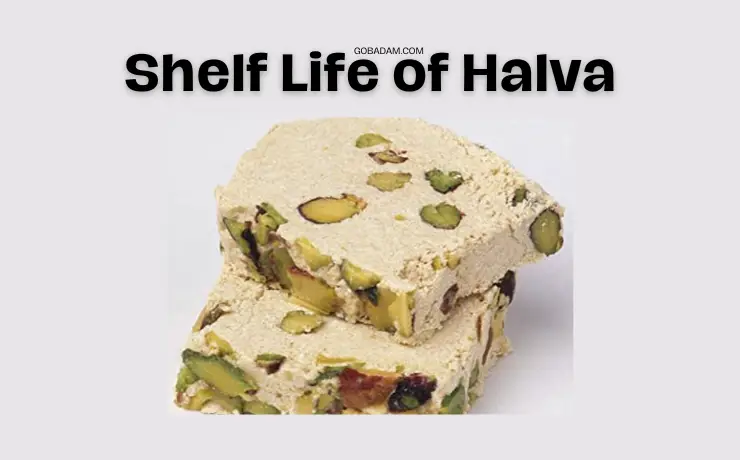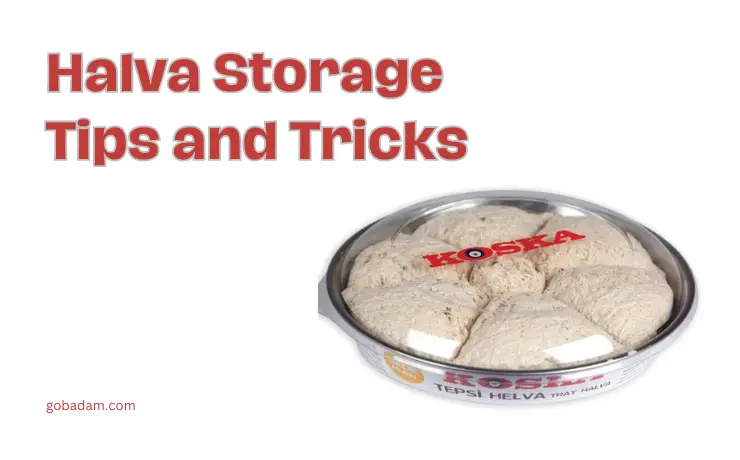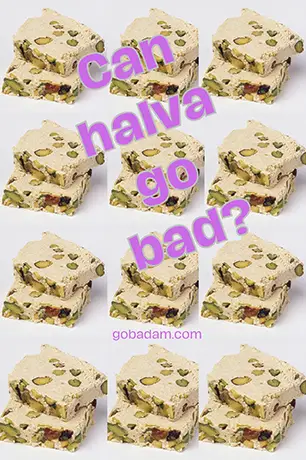Can halva go bad? Absolutely, and much to the dismay of dessert enthusiasts! Halva, a delectable treat revered across many cultures, isn’t immune to the test of time. Whether it’s the shelf life intrigues you, or the subtle ways its taste can change, it’s essential to know the signs of spoilage and the best ways to store it.
From the nuances between homemade and store-bought varieties to the economic implications of ensuring your halva remains in peak condition, we’re diving deep into everything you need to know.
Prepare to journey into the rich world of halva preservation, where flavor, texture, and safety coalesce into one harmonious dance.
Can halva go bad?
Yes, halva can go bad. Over time or with improper storage, it can develop mold, an off-putting odor, or change in texture. Factors influencing its shelf life include ingredients, preservatives, and storage conditions. To maintain its quality, keep halva in a cool, dry place and consume it by its expiration date.

What is a halva made of?
Halva is a sweet treat made mainly from ground sesame seeds transformed into a paste called tahini, mixed with a sweetener like sugar or honey. Halva varieties can depend on the region as well.
In places like the Middle East, tahini-based halva is most popular. However, other regions have their takes. The Balkans and Eastern Europe often use sunflower seeds, while in India, semolina and ghee are common ingredients. Iran has its versions with ingredients like rice flour and rose water. Traditional Turkish halva recipe basically consists of tahini, flour, and sugar.
Depending on the region or recipe, halva might also have pistachio, nuts, dried fruits, or spices for added flavor.
👉 You can also take a look at our articles Can tahini go bad and Does molasses expire?
How do halva ingredients affect its lifespan?
Halva’s lifespan is influenced by its ingredients. Sesame-based halva tends to have a longer shelf life due to the natural oils in sesame seeds. In contrast, halvas with perishable additions like fresh fruits or dairy may spoil faster. Storage conditions also play a role, but ingredients are pivotal in determining longevity.
Shelf Life of Halva
The shelf life of halva varies based on its ingredients and storage. Sesame-based halva can last several months in cool, dry conditions. Halvas with fresh ingredients, like fruits or dairy, have shorter lifespans.
Another thing to consider for halva lifespan is where it is produced and under what conditions. For instance, since there are no additives in homemade halva, it can spoil in a shorter time. The situation may be the opposite in fabricated production.

Homemade Halva Lifespan
Homemade halva shelf life is typically shorter, lasting around 1-2 weeks when stored in the refrigerator, due to the lack of preservatives and potential inclusion of fresh ingredients.
Store-Bought Halva Lifespan
Store-bought halwa shelf life unopened is usually between 6-12 months, given its preservatives and specialized packaging.
Store-bought halva shelf life after opening is approximately 4-6 months, but it’s crucial to keep it sealed well in a cool, dry place to maintain its freshness. Always refer to the manufacturer’s instructions, the product’s expiration date and check for any signs of spoilage.
Signs of Spoiled Halva
There are several topics and significant signs that we can understand if a halva bar has gone bad or not. Appearance, bad smells, taste, and other clues can be very strong signs.

Deterioration in appearance
Identifying mold, off-putting odors, or texture changes in halva are some of the significant spoilage signs. A fresh halva should have a smooth, slightly crumbly texture and a pleasant sweet aroma.
If the surface appears wet, discolored or has any unusual spots, it’s a clear indication of spoilage. Furthermore, any deviation from its typical nutty-sweet scent to something sour or fermented should be a red flag.
It’s crucial for consumers to be vigilant and prioritize their health, discarding any halva that seems questionable. Always store halva properly to preserve its quality and ensure a delightful consumption experience.
Flavor and Texture
How aging or improper storage affects the taste and mouthfeel of halva is quite noticeable to those familiar with its fresh state. As halva ages, its naturally sweet and nutty flavors can become subdued, replaced by a staleness that diminishes its overall appeal. Improper storage, especially in humid or warm conditions, can hasten this process.
The mouthfeel, a signature trait of halva, can also be affected. Fresh halva has a unique crumbly-yet-creamy texture. However, when stored improperly or when it nears the end of its shelf life, it may either become too hard and brittle or too soft and mushy. These changes not only compromise the eating experience but can also be indicative of the product’s decreasing freshness.
Impact of External Factors
Humidity, light, and temperature play pivotal roles in the preservation of halva. High humidity can introduce moisture, making halva mushy and prone to mold. Direct light, especially sunlight, can degrade its quality and taste. Elevated temperatures can cause the halva to soften excessively, altering its texture. For optimal freshness, halva should be stored in a cool, dark, and dry environment.
Safety Concerns
Consuming spoiled or outdated halva poses risks such as food poisoning, stomach upset, and exposure to harmful bacteria or mold, potentially leading to health complications. Always prioritize safety by discarding questionable halva.
SEE OFFER 👉🏻halvah bars
Halva Storage Tips and Tricks
Here are the best practices to ensure halva remains fresh and flavorful.
To ensure halva remains fresh and flavorful, consider the following best practices:
- Cool and Dry: Store halva in a cool and dry place, away from direct sunlight and moisture, to prevent it from becoming too soft or developing mold.
- Label and Date: Especially for homemade halva, always label and date the container. This way, you can keep track of its freshness and ensure safe consumption.
- Refrigeration: If your home is particularly warm or humid, consider refrigerating your halva. While this can make it harder in texture, it will ensure longevity. Allow it to come to room temperature before consuming it for the best taste and texture.
- Avoid Cross-Contamination: Use clean utensils when cutting or serving halva. Introducing external elements can decrease its shelf life.
- Airtight Containers: Once opened, transfer the halva bar to an airtight container. This will protect it from external contaminants and retain its original texture.
SEE OFFER 👉🏻freezer safe airtight containers
By following these tips, you’ll be well-equipped to enjoy your halva at its best for as long as possible.

Frequently Asked Questions About Can Halva Go Bad
Here are top asked questions about can halva go bad and signs for spoilage. There are many factors for spoilage of halva bars and in this blog post, I hope that I could mention many of them. If you have more questions, please do not hesitate to send them to me.
Does halva have sugar?
Yes, halva typically contains sugar or another sweetener to give it its characteristic sweetness. However, some halva manufacturers do not use any added sugar and you can find some diabetic tahini halva bars in stores.
Can halva go bad in the fridge?
Yes, halva can go bad in the fridge, especially if exposed to moisture or contaminants, but it generally lasts longer than at room temperature. Check from time to time to see if your halva is spoiled. Always follow the manufacturer’s guide.
How do you store leftover halwa?
To store leftover halwa, place it in an airtight container to prevent moisture and contaminants. Store in a cool, dry place or refrigerate for extended freshness. Always use clean utensils to avoid cross-contamination.
When exploring the shelf life of various kitchen staples, many often wonder: Does Honeycomb Expire? Similarly, questions arise about products like Can Tahini Go Bad? or condiments like Do Capers Go Bad? Even everyday items aren’t exempt from such inquiries, prompting questions like Does Pasta Go Bad?, Does Cornstarch Go Bad?, Do Wasa Crackers Go Bad?, Does Halloween candy expire? and How Long Do Bagels Last?


